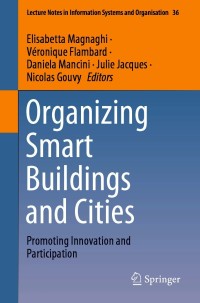Need requirements 4,5,6 PLEASE. My answers from 1,2,3 are attached. THANKS.









a. Actual sales in December were $72,000. Selling price per unit is projected to remain stable at $12 per unit throughout the budget period. Sales for the first five months of the upcoming year are budgeted to be as follows: January . . . . . . . . . $ 104,400 February ........ $ 108,000 March $ 112,800 April................... $ 109,200 May............ $ 105,600 b. Sales are 20% cash and 80% credit. All credit sales are collected in the month following the sale. c. Rittle Manufacturing has a policy that states that each month's ending inventory of finished goods should be 10% of the following month's sales (in units). d. Of each month's direct material purchases, 20% are paid for in the month of purchase, while the remainder is paid for in the month following purchase. Three kilograms of direct material is needed per unit at $2.00/kg. Ending inventory of direct materials should be 30% of next month's production needs. e. Monthly manufacturing conversion costs are $4,500 for factory rent, $2,800 for other fixed manufacturing expenses, and $1.10 per unit for variable manufacturing overhead. No depreciation is included in these figures. All expenses are paid in the month in which they are incurred. f. Computer equipment for the administrative offices will be purchased in the upcoming quarter. In January, Rittle Manufacturing will purchase equipment for $6,000 (cash), while February's cash expenditure will be $12,800 and March's cash expenditure will be $15,600 g. Operating expenses are budgeted to be $1.30 per unit sold plus fixed operating expenses of $1,800 per month. All operating g. Operating expenses are budgeted to be $1.30 per unit sold plus fixed operating expenses of $1,800 per month. All operating expenses are paid in the month in which they are incurred. h. Depreciation on the building and equipment for the general and administrative offices is budgeted to be $6,100 for the entire quarter, which includes depreciation on new acquisitions. i. Rittle Manufacturing has a policy that the ending cash balance in each month must be at least $4,200. It has a line of credit with a local bank. The company can borrow in increments of $1,000 at the beginning of each month, up to a total outstanding loan balance of $130,000. The interest rate on these loans is 2% per month simple interest (not compounded). Rittle Manufacturing pays down on the line of credit balance if it has excess funds at the end of the quarter. The company also pays the accumulated interest at the end of the quarter on the funds borrowed during the quarter. j. The company's income tax rate is projected to be 30% of operating income less interest expense. The company pays $10,800 cash at the end of February in estimated taxes. Data Table A Current Assets as of December 31 (prior year): Cash Accounts receivable, net Inventory Property, plant, and equipment, net..... Accounts payable........ Capital stock A 4,640 47,000 15,300 123,000 42,800 123,500 23,100 A A Retained earnings ...................... Requirement 1. Prepare a schedule of cash collections for January, February, and March and for the quarter in total. (Round your answers to the nearest whole dollar.) Rittle Manufacturing Cash Collection Budget January February 20880 2 1600 47000 _ 83520 March 22560 86400 Quarter 65040 Cash sales Credits sales 216920 67880 105120 108960 Total cash collections 281960 Requirement 2. Prepare a production budget. (Hint: Unit sales - Sales in dollars / Selling price per unit) Rittle Manufacturing Production Budget January February 8700 9000 900 940 9600 9940 1275 900 March 9400 Quarter 27100 Unit sales 910 2750 Plus: Desired ending inventory Total needed 29850 10310 940 3115 Less: Beginning inventory 8325 9040 Units to produce 9370 26735 Requirement 3. Prepare a direct materials budget. (Round your answers to the nearest whole dollar. For cost per kg, round your answers to the nearest cent. Abbreviation used: DM = direct material.) Rittle Manufacturing Direct Materials Budget January February 8325 9 040 31. 24975 2 7120|| 8433 Quarter 26735 Units to be produced March 9370 3 28110|| x kg of DM needed per unit Quantity (kg) needed for production 80205 8163 24732 33111|| 35553 Plus: Desired ending inventory of DM Total quantity (kg) needed Less: Beginning inventory of DM Quantity (kg) to purchase 36273 8433 8136 104937 33111 27417 27840 16569 88368 x Cost per kg 66222 54834 55680 Total cost of DM purchases 176736 Requirement 4. Prepare a cash payments budget for the direct material purchases from Requirement 3. (Leave any unused cells blank. Round your answers to the nearest cent.) Rittle Manufacturing Cash Payments for Direct Material Purchases Budget January February March Quarter December purchases (from Accounts Payable) January purchases February purchases March purchases Total cash payments for DM purchases Requirement 5. Prepare a cash payments budget for conversion costs. (Round your answers to the nearest whole dollar.) Quarter Rittle Manufacturing Cash Payments for Conversion Costs Budget January February March Variable conversion costs Rent (fixed) Other fixed MOH Total payments for conversion costs Requirement 6. Prepare a cash payments budget for operating expenses. (Round your answers to the nearest whole dollar.) Rittle Manufacturing Cash Payments for Operating Expenses Budget January February March Quarter Variable operating expenses Fixed operating expenses Total payments for operating expenses















